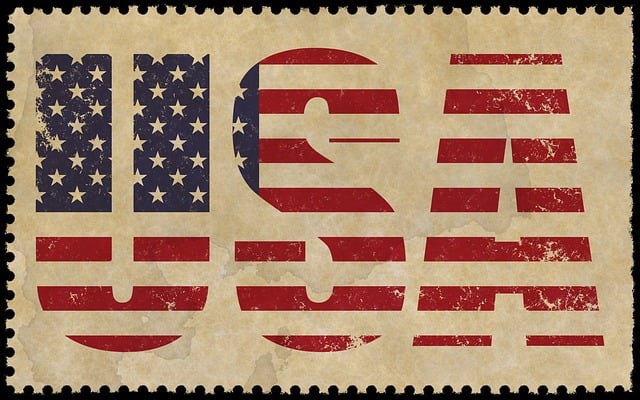The 2.5 x 4 American flag is a dynamic symbol of the nation's growth and history, evolving from 13 stripes and stars in 1777 to its current 50 stars after Hawaii's statehood in 1960. Its design, including specific colors and ratio, represents core values like valor, purity, vigilance, and justice, fostering a powerful sense of patriotism. The flag's evolution reflects key historical events and cultural shifts, with each star symbolizing a state, underscoring unity and diversity. Its dimensions and vibrant colors make it a ubiquitous emblem, promoting national pride and shared purpose.
“Unveiling the Power of the 2.5 x 4 American Flag: A Journey Through Symbolism and History
The American flag, with its timeless design, is more than just a piece of fabric—it’s a powerful symbol of nationhood and freedom. This article takes you on an enlightening journey through the evolution of the 2.5 x 4 american flag, exploring its historical perspective, color symbolism, and arrangements of stars and stripes. We delve into state flags, their regional identities, and the global impact that has inspired other nations. Discover how this iconic design continues to shape cultural narratives and foster a sense of unity.”
- The Evolution of American Flag Design: A Historical Perspective
- – Unraveling the symbolism behind the 2.5 x 4 flag
- – Key historical events influencing design changes
- Color and Symbolism: Decoding the American Flag's Meaning
- – The significance of red, white, and blue
The Evolution of American Flag Design: A Historical Perspective

The American flag, formally known as the Stars and Stripes, has undergone a fascinating evolution since its inception in 1777. The original design featured 13 stripes representing the original colonies and 13 stars for each state, arranged in a simple, yet powerful layout. This initial version, often referred to as the “Betsy Ross Flag,” was a testament to the early nation’s identity and unity. As the United States grew, so did its territory, leading to the need for a new flag design. In 1795, the flag was modified to include 15 stars and 15 stripes, reflecting the admission of Vermont and Kentucky as states. This period marked a significant shift in the flag’s aesthetics, setting a precedent for future changes.
The 2.5 x 4 american flag continued to evolve with each new state joining the Union. In 1818, Congress passed a law standardizing the flag at 13 stripes, ensuring consistency, and allowing for the addition of stars as states joined. This law also specified the arrangement of stars in rows and columns, creating a more organized and symmetrical design. Over time, the number of stars grew to represent the 50 states, with the most recent change occurring in 1960 after Hawaii’s statehood. The evolution of the American flag is a visual narrative of the nation’s history, reflecting its expansion, growth, and changing landscape.
– Unraveling the symbolism behind the 2.5 x 4 flag

The 2.5 x 4 American flag, a familiar sight across the nation, carries profound symbolism that reflects the country’s history and values. At its core, the design incorporates essential elements that represent the United States’ ideals and heritage. The flag’s proportions are deliberate; the width-to-length ratio of 2:3 is not merely aesthetic but aligns with historical significance, mirroring the original designs of the U.S. banner.
The colors play a crucial role in conveying symbolism. Red stands for valor and courage, while white symbolizes purity and innocence. Blue represents vigilance, perseverance, and justice—values that have been integral to American society. These colors combine to create a powerful visual representation of the nation’s character, inviting viewers to reflect on the principles upon which the country was founded.
– Key historical events influencing design changes

The evolution of a nation’s flag is often a reflection of its historical journey, shaped by pivotal moments and cultural shifts. In the case of the United States, several key historical events have influenced the design changes of the iconic 2.5 x 4 American flag. One such event was the American Revolution, which led to the creation of the original Continental Army flag featuring the stars and stripes—a symbol of unity and rebellion against British rule.
Over time, as the nation grew and evolved, so did its flag. Significant milestones like the adoption of the Constitution and the addition of new states prompted the incorporation of more stars into the flag. The 2.5 x 4 ratio has remained consistent, reflecting a balance between honorably displaying the stars and ensuring the flag’s practical use, be it on land or at sea. These design modifications not only serve as visual reminders of America’s history but also carry symbolic meanings, representing freedom, bravery, and the ever-changing landscape of the nation.
Color and Symbolism: Decoding the American Flag's Meaning

The colors of the 2.5 x 4 American Flag hold profound symbolism, each with its own unique meaning. Red represents valor and bravery, white symbolizes purity and innocence, while blue stands for vigilance, perseverance, and justice. These colors together convey the ideals upon which the nation was founded – courage in the face of adversity, unwavering integrity, and a steadfast commitment to fairness.
The flag’s design, with its stars arranged in rows, further adds to its significance. The 50 stars represent the 50 states that make up the United States, fostering a sense of unity and national identity. This visual representation underscores the diversity and strength found within each state, unified under one nation, evoking a powerful sense of patriotism and shared purpose.
– The significance of red, white, and blue

The colors red, white, and blue hold profound symbolism in the 2.5 x 4 American flag, representing the nation’s history, values, and ideals. Red signifies courage and sacrifice, evoking the blood shed by pioneers and soldiers defending their country. White embodies purity, innocence, and the quest for freedom, reminding citizens of the nation’s founding principles based on liberty and justice. Blue represents vigilance, perseverance, and the watchful eye that safeguards democracy. These colors together convey a powerful message of unity, strength, and resilience, making the American flag a recognizable symbol globally.
The 2.5 x 4 dimensions of the flag also carry significance, reflecting its role as a portable and easily visible emblem. This size allows it to be displayed in various settings, from homes and businesses to public spaces and schools, fostering a sense of national pride and identity. The ratio of the sides ensures a balanced design that captures the attention, symbolizing the balance and harmony within American society.
